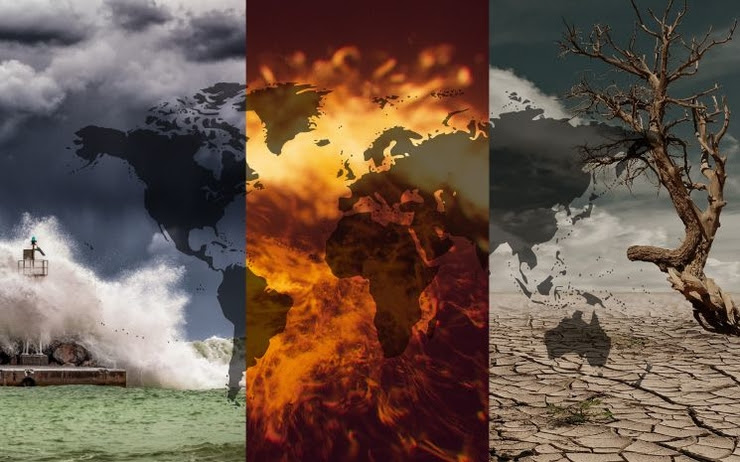Since 2014, the years have followed each other and are increasingly hot, the overtaking is impressive with more than one degree of the temperatures of the pre-industrial era, according to the annual report of the European program on climate change Copernicus (C3S).
2022, is the fifth most recent year, only beaten by recent years, and was again marked by a string of extreme events that illustrate the consequences of global warming.
Despite the La Niña climatic cooling, the year 2022 is “about 1.2 °C” warmer than the period 1850-1900, before the industrial revolution had its effects on the climate, says C3S.
Over the whole of Europe, which is the continent where the observed warming is the fastest, 2022 ranks as the “second-warmest year”, but the summer months constitute a new record for the whole continent, largely beaten in Great Britain and aggravated by an exceptional rainfall deficit in Spain, France or Portugal.
In all the countries mentioned, plus Switzerland, Croatia and Bosnia-Herzegovina, the year 2022 as a whole is even a new absolute record of heat since the beginning of the measurement record.
Asia is strongly impacted with “large parts of the Middle East, Central Asia and China, New Zealand, North Africa and the Horn of Africa” also set a new annual record, C3S reports.
The study confirms the forecasts of the World Meteorological Organization (WMO), published in November and then described as a “chronicle of climate chaos” by UN chief António Guterres.
The average global temperature over the decade 2013-2022 is estimated to be 1.14 °C above that of the pre-industrial era.
The Paris Agreement, reached in 2015 under the auspices of the UN, aims to limit warming to well below 2°C if possible 1.5 °C. While science has proven that every tenth of a degree multiplies extreme weather events, the more ambitious target of +1.5 °C has become the goal to “keep alive.”
In order to achieve these goals, however, countries around the world must meet their greenhouse gas reduction targets.
But in 2022, carbon dioxide (CO2) concentrations in the atmosphere reached a new record of “417 parts per million (ppm)” with an annual increase of “about 2.1 ppm, similar to the rate in recent years,” the European program notes.
Concentrations of methane, with a more intense but shorter-lived warming power, are now at 1894 parts per billion (ppb). They have increased “by nearly 12 ppb, which is above average, but below the records of the last two years,” it says.



Comment here